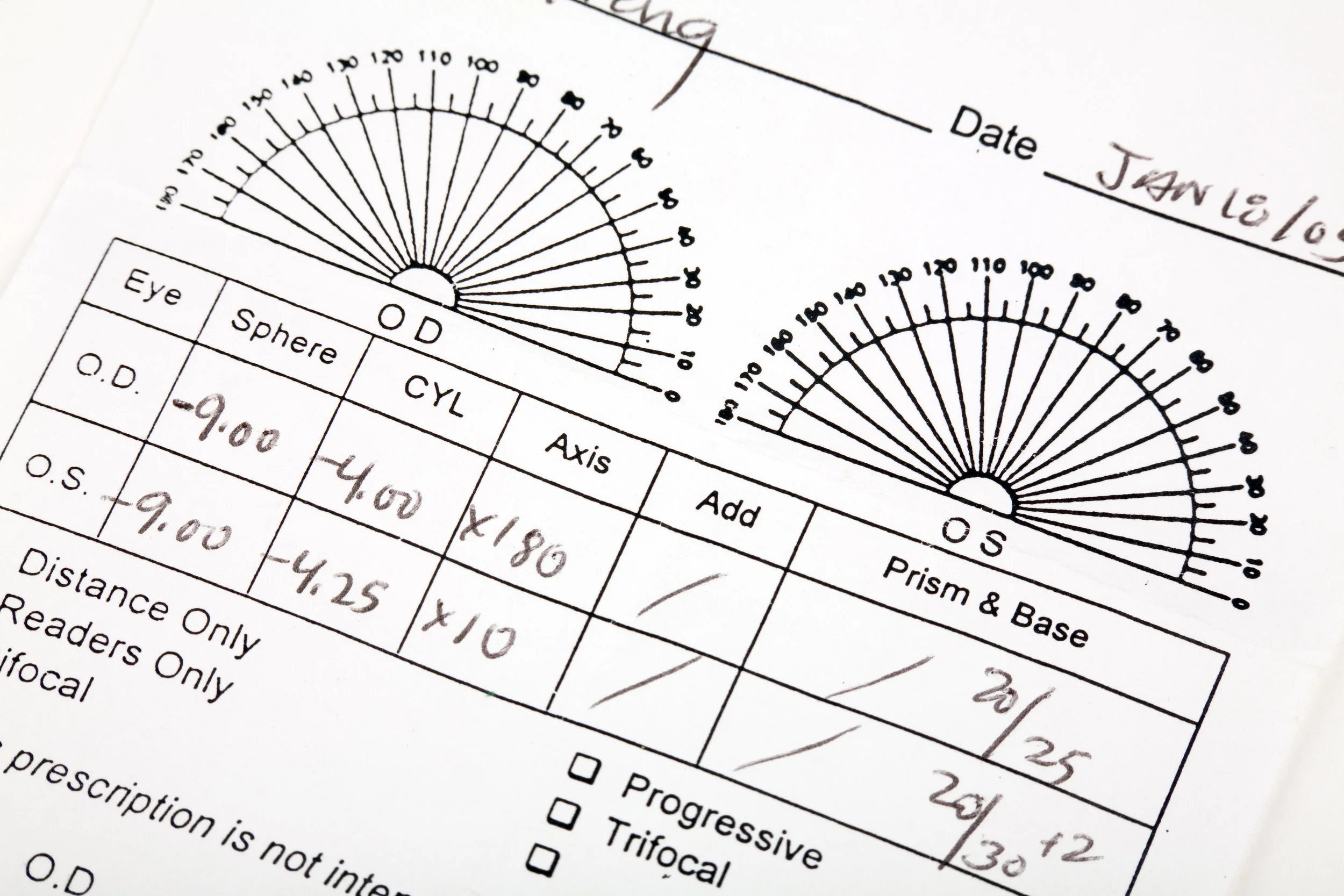Decoding Your Glasses Prescription
Have you ever looked at you or your child’s eyeglass prescription and felt as though you were looking at another language? Well, you’re not alone. It’s actually one of the most frequently asked glasses-related questions on the internet. That being said, we have created this quick (and much easier to read) guide for figuring out what your prescription is really saying.
Before diving into your prescription, you should first understand the basis doctors use for their assessments. In the simplest terms, all your measurements are relative to 20/20 vision (or 6/6 outside of the U.S.). For those of you who don’t know what that actually means, the average eye chart is positioned 20ft away during an exam. So, if you are 20/20, you see exactly what the average person sees 20ft away. This is the starting place for understanding how the numbers on your prescription fall into place.
Now that we did that small overview, let’s cover the easiest part of understanding your prescription first. On your prescription, you will find the letters OD and OS. Stemming originally from the Latin words “oculus dexter” and “oculus sinister”, these abbreviations are just fancy ways of saying “left eye” and “right eye”. And, if you happen to have the letters OU on your prescription, that’s short for “oculus uterque”, more commonly known as “both eyes”.
{Easy enough, right? Okay, now that we know which eye is which, let’s dive a little deeper to see what this prescription is saying about our vision in each eye.}
When you look at your prescription, you will see most or all of the following descriptors: Spherical (SPH), Cylindrical (CYL), Axis (AX), Add, and Prism. Sounds pretty technical… and incredibly confusing. So, let’s break it down.
Spherical (SPH) is the indicator for nearsightedness (myopia) or farsightedness (hyperopia). If you see a minus sign (-) next to your number in this box, it indicates that you need a negatively adjusted lens to compensate for nearsightedness. On the other hand, if you see a positive sign (+) next to your number in the box, it’s indicative that they’ll need a positively adjusted lens to compensate for farsightedness. In easier words, Nearsightedness (-) means you see objects that are closer clearly, but your vision gets worse the farther away you get. On the flip side, farsightedness (+) indicates that you see objects far away clearly, but they get blurrier as they get closer. Regardless of your prescription, the word “sphere” shows that it is a prescription that is equal in all parts of the eye.
Cylindrical (CYL) and Axis (AX) are both measurements used in reference to an astigmatism. According to the American Optometric Association, an astigmatism is when “an irregularly shaped cornea or lens prevents light from focusing properly on the retina… As a result, vision becomes blurred.” CYL refers to how flat or irregularly-shaped your cornea is and AX is the degree (from 0-180) that details exactly where your astigmatism is located on your cornea. If one or both of your eyes have no astigmatism, your doctor may just leave these blank or mark DS (short for diopters) to indicate that they checked and that eye (or eyes) didn’t present an astigmatism.
Add is any additional magnifying power that needs to be added to the lower part of your lenses . This is commonly used in bifocals, trifocals, and progressive lenses to address Presbyopia, a natural loss of the eyes’ ability to focus on nearby images that is caused by aging.
Prism and Base are used when an eye has a vision problem that causes someone to see double or blurred vision and is NOT due to a refractive error. In layman’s terms, when an eye has a prism/base prescription, it is because a person’s vision deviates and consistently positions images where they are not supposed to go. This is shown in people whose eyes tend to cross or in those that seem as though they have a wandering eye.
So, there you have it! The ins and outs of decoding your prescription. We hope this is helpful and feel free to message us on Facebook or Instagram if there are any other eye-related topics you’re dying to know more about!
-The Fitz Team


